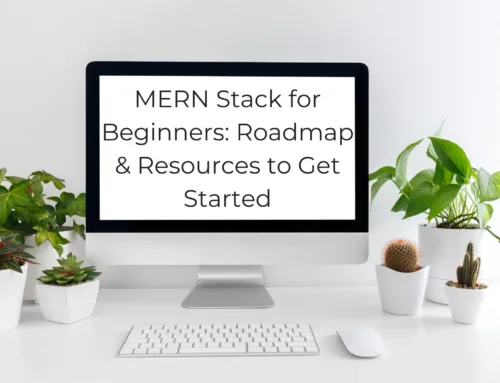In the vast expanse of the digital marketplace, websites often resemble lone islands – meticulously crafted, brimming with potential, yet unseen amidst the churning waves of the internet. This is where the art and science of Search Engine Optimization (SEO) become essential. SEO acts as the lighthouse, guiding potential customers to your digital haven and unlocking the true potential of your online presence. But in the ever-evolving world of search engines, navigating the intricacies of SEO can feel like an odyssey. This meta blog post is your trusty compass, delving deep into the various aspects of an effective SEO marketing strategy, specifically tailored for E-commerce success.
The E-commerce Landscape: A Competitive Sea
The e-commerce industry thrives on visibility. With countless online stores vying for customer attention, achieving a top spot on search engine results pages (SERPs) is no longer a luxury, it’s a necessity. Here’s the harsh reality: potential customers rarely venture beyond the first few pages of search results. Suppose your e-commerce website languishes in the depths of SERPs. In that case, it’s akin to having a beautifully stocked store hidden in a deserted alleyway – invisible and inaccessible to the throngs of potential buyers.
This is where a robust SEO marketing strategy becomes your secret weapon. By leveraging the power of search engines, you can ensure your e-commerce website surfaces prominently for relevant search queries. Imagine this: a customer searching for “eco-friendly running shoes”. With a well-optimized website, your store, offering a diverse selection of sustainable footwear, appears at the forefront of the search results. This translates to increased website traffic, more product views, and ultimately, a significant boost in sales.
Demystifying the SEO Jargon: A Chart for Uncharted Waters
Before embarking on our SEO odyssey, let’s decipher some key terms that will serve as landmarks on our journey:
Keywords: Users input these words and phrases into search engines. Identifying relevant, high-volume keywords is crucial for attracting targeted traffic to your e-commerce website.
On-Page Optimization: This encompasses all the elements within your website that can be optimized for search engines, such as page titles, meta descriptions, content structure, internal linking, and image optimization.
Off-Page Optimization: This refers to activities outside your website that influence your search engine ranking, primarily focusing on building high-quality backlinks from other websites.
Search Intent: Understanding what users are truly looking for when they perform a search query is critical for crafting content that resonates with their needs.
Conversion Rate: This metric indicates the percentage of website visitors who perform a desired action, such as making a purchase or subscribing to a newsletter.
Charting Your Course: The Pillars of an E-commerce SEO Strategy
A successful SEO strategy for your e-commerce website is built upon five key pillars:
1. Keyword Research: The Treasure Map to Organic Traffic
Keywords are the bedrock of any SEO strategy. They are the bridges that connect your e-commerce website with potential customers actively searching for products and services. Keyword research entails identifying:
High-volume keywords: Words and phrases with a significant search volume, indicating strong user interest.
Long-tail keywords: More specific, niche keywords with lower search volume but higher conversion potential. For example, “women’s sustainable running shoes for flat feet” is a long-tail keyword with a more targeted audience.
Competitor analysis: Studying the keywords your competitors are ranking for can provide valuable insights and identify opportunities to differentiate yourself.
Tools such as Google Keyword Planner, Ahrefs, and SEMrush can be invaluable assets in your keyword research quest. Remember, the goal isn’t simply to chase the most popular keywords. Instead, focus on selecting high-intent keywords that align perfectly with the products you offer and the needs of your target audience.
2. Content Optimization: The Siren Song of User Engagement
Once you’ve unearthed your keyword treasure, it’s time to optimize your website’s content. This involves:
Crafting compelling product descriptions: Go beyond generic descriptions: and showcase product features, benefits, and unique selling points. Don’t forget to strategically integrate your target keywords naturally within the content.
Creating informative blog posts and articles: Establish your brand as an authority by providing valuable information relevant to your target audience’s search intent. This could include product reviews, buying guides, industry trends, and eco-friendly tips if you’re selling sustainable running shoes.
Optimizing page titles and meta descriptions: These are the first impressions your website gets on SERPs. Craft clear, concise, and keyword-rich titles and meta descriptions that entice users to click through.
3. Technical SEO: Establishing a Solid Foundation for Search Engines
Technical SEO focuses on the behind-the-scenes elements that make your website search-engine friendly. Here are a few critical factors to take into account:
Website speed: A slow-loading website can significantly hinder your search engine ranking and frustrate potential customers. Optimize images, minimize code bloat, and leverage caching mechanisms to ensure a fast and seamless user experience.
Mobile-friendliness: With the ever-increasing dominance of mobile browsing, your e-commerce website must be responsive and provide an optimal user experience across all devices.
Site architecture: A well-structured website with clear navigation allows search engines to crawl and index your content effectively.
Structured data markup: This schema markup provides search engines with richer information about your products and can enhance your website’s appearance in SERPs.
Internal linking: Strategic linking between your website’s pages helps search engines understand the hierarchy and relevance of your content.
4. Building Backlinks: The Credibility Currency
Backlinks essentially represent votes of confidence from other websites to yours. Earning high-quality backlinks from reputable websites signals to search engines that your content is valuable and trustworthy, ultimately boosting your website’s authority and ranking. Below are some tactics to help you begin:
Guest blogging: Contribute informative guest posts to relevant websites in your niche, including a backlink to your e-commerce website within the author bio.
Broken link building: Identify broken links on websites within your industry and reach out to the website owners, offering your high-quality content as a replacement, complete with a backlink.
Directories and online communities: Submitting your website to relevant online directories and participating in industry forums can generate valuable backlinks.
5. Conversion Optimization: Turning Traffic into Sales
While attracting targeted traffic is crucial, the ultimate goal of your SEO efforts is to convert website visitors into paying customers. Here’s where conversion rate optimization (CRO) comes into play:
Clear calls to action (CTAs): Guide website visitors towards your desired actions, such as “Add to Cart” or “Learn More”.
High-quality product images and videos: Showcase your products in detail with captivating visuals that entice potential buyers.
Streamlined checkout process: Make the buying process as smooth and user-friendly as possible to minimize cart abandonment.
A/B testing: Experiment with different website elements and layouts to identify what resonates best with your target audience and maximizes conversions.
Keep in mind, SEO is an ongoing journey, not a final destination. Search engine algorithms are constantly evolving, and it’s vital to stay updated on the latest trends and best practices. Regularly monitor your website’s analytics, track your keyword rankings, and adapt your SEO strategy accordingly.

The Final Frontier: Measuring the Success of Your SEO Odyssey
So, you’ve embarked on your SEO odyssey, charted your course, and optimized your e-commerce website. Now, it’s time to measure your progress and assess the effectiveness of your strategy. Here are some key metrics to track:
Organic traffic: Monitor the number of visitors your website receives from search engines.
Keyword rankings: Track how your website ranks for your target keywords over time.
Conversion rate: Analyze the percentage of website visitors who make purchases or take other desired actions.
Bounce rate: Monitor the proportion of visitors who exit your website after viewing just one page. A high bounce rate might indicate that your content isn’t engaging or relevant to your target audience.
Average time on page: This metric reveals how long visitors are spending on your website, indicating the level of engagement with your content.
By regularly analyzing these metrics, you can gain valuable insights into the effectiveness of your SEO strategy and make informed decisions to further optimize your e-commerce website for long-term success.
The SEO odyssey may seem daunting at first, but with the right tools, knowledge, and a dedicated team, you can navigate the ever-changing digital landscape and steer your e-commerce website towards a prosperous future.
Ready to embark on your SEO journey and conquer the vast e-commerce seas? Contact Impact Mindz Tech Solutions today, and let our team of SEO experts be your guide. We’ll help you craft a customized SEO strategy that propels your e-commerce website to the top of search engine results pages and unlocks the true potential of your online store.








